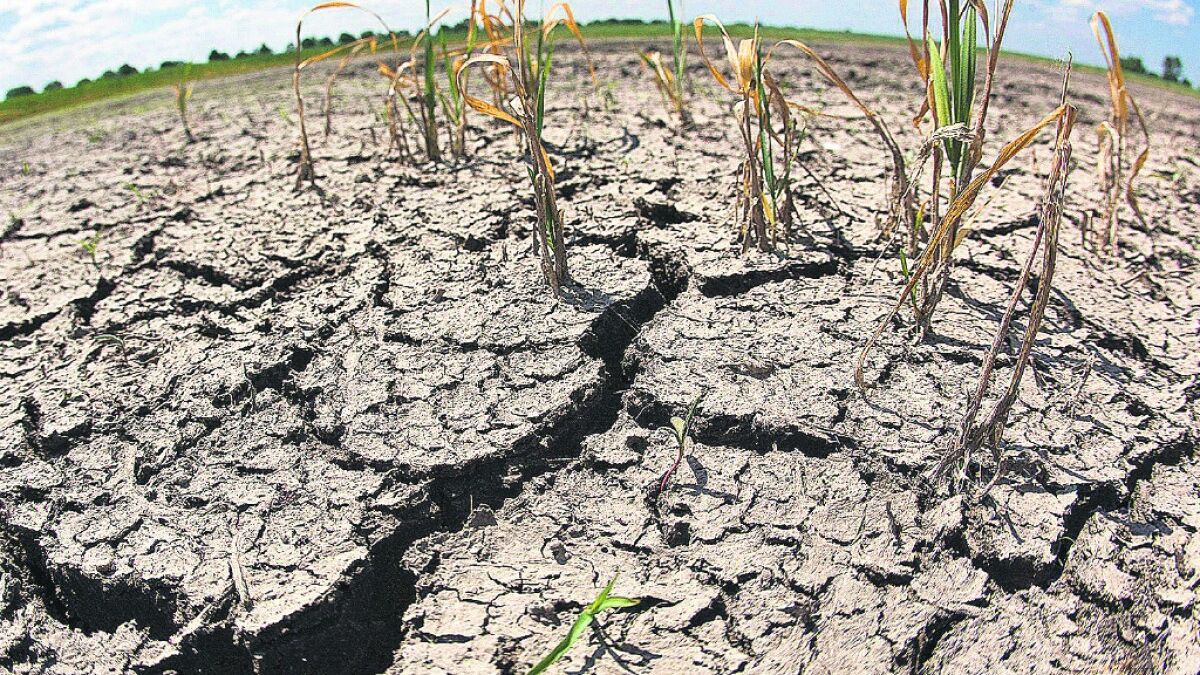The drought seems to be far from over Uruguay, and is already considered the most important of the last century. Without precedents for the country to experience a water deficit of these dimensions in its history, the negative consequences continue to add up before the authorities are able to solve the previous problems: ruined crops, lack of drinking water and a direct impact on the national economy, the central effects of a historic drought.
The intense summer passed and some rains gave the impression that, together with the high temperatures, the water deficit was also disappearing. However, two months after the National Administration of State Sanitary Works (OSE) alerted by the critical levels in their drinking water reserves and that many departments were counting with anguish the days they had left with supply capacity, the scenario does not seem to be very different.
The measure was taken at the end of April, when the board of directors of the state company approved the increase in the proportion of sodium in the mixture of drinking water that is distributed to the population from 200 milligrams per liter to 280 mg/L, while from chloride they went from 280 mg/L to 450 mg/L. Within a few days, the Ministry of Public Health (MSP) authorized a new increase in the measurements, which went to 400 mg/L and 700 mg/L respectively.
Current regulations provide for a ceiling of 250 mg/L of salinity, so current levels are well above. However, the OSE and MSP authorities insist that the decision will have no effect on health and that it only implies a sensitive difference to the “palate”.
The immediate consequence of this decision was the tripling of bottled water sales and the concern of a possible shortage; something that, so far, has not happened. However, the concerns of people with blood pressure problems and kidney failure, as well as pregnant women and mothers and fathers of babies under the age of six, were soon added, regarding how the increase in salinity could affect them.
In response, OSE raised the possibility of subsidizing people with pre-existing diseases or with contraindicated sodium consumption, and who cannot purchase bottled water due to their socioeconomic realities, so that they can consume safe water. This idea was reinforced by the broad frontfrom where they suggested granting vouchers of a value equivalent to 10 water cans to beneficiaries of the Uruguay Social Card from the Ministry of Social Development (Mides)as well as retirees and pensioners who receive a salary of less than two minimum pensions.
On the other hand, the opposition also proposes the Exemption from VAT and Internal Specific Tax (Imesi) to bottled water, as well as a significant reduction in the OSE rate for users in the area affected by the increase in sodium chloride in the product.
Likewise, the increase in salinity in the water also generates problems for the National Administration of Fuels, Alcohol and Portland (Ancap)while the sodium and chloride levels affect the industrial process of the refinery in The Tile, and puts your pipes at risk. A problem in the facilities could mean millions of dollars in losses, part of an income that also contributes to the stability of fuel prices in the country.
In the meantime, and as a more recent measure, OSE will build provisional and emergency a dam on the Santa Lucia River, with a $500,000 investment and an end date of one week. The objective is to be able to manage the resource more efficiently, according to the needs that are had.
Agriculture will continue to suffer the consequences throughout the year
The field situation It does not differ much from that of the rest of the country, with the addition of a production directly hit by the water deficit, whose consequences will continue to be experienced throughout the year, at least.
The drought, which generated the extension of the agricultural emergency throughout the country until September —in effect since October of last year—, it reduced the water levels in the soils by barely 10%, causing a significant decrease in planting and harvests, as well as serious problems for cattle grazing due to the minimum growth of pastures and also a reduction in the remission of milk.
However, the biggest impact can—and will—be seen in the soy, whose harvest is already estimated to be less than a third of what was expected. In this sense, a maximum of 800,000 tons is expected for the end of the harvest, when the original expectations calculated around 3 million. In the worst case scenario, the harvest could barely reach 650,000 tons.
This situation will create a significant reduction in placements of this product, one of the country’s main ones in the international market. But, likewise, soybean exports already showed a significant drop in April, plummeting 67% according to the report from Uruguay XXI. The explanation lies, without surprise, in the reduction in the volume of the oilseed, which also fell by 63% —the remaining 4 points were due to a drop in international prices.
Certainly, and with the poor projections for the current harvest, soybean exports are expected to fall further.
The economic impact, in figures
Among the material losses due to the drought and those that are still no more than projections —but that will materialize over the weeks—, the Ministry of Livestock, Agriculture and Fisheries (MGAP) calculate an economic impact of at least $1.8 billion from the drought. The physical decrease in production is the main reason behind this figure, which is known to continue to increase as crops are processed and a clearer picture of livestock results is available.
Because of this, the country is expected to grow even less than expected during 2023. For the Minister of Economy and Finance (MEF), Azucena Arbelechethe increase Gross Domestic Product (GDP) for this year it will be a modest 2%, almost 3 points less than last year (5.9%), mainly as a consequence of the effects of the drought.
For his part, also State Insurance Bank (BSE) experiences in the water deficit the biggest accident since the existence of the banking entity, as they described it. From the organism they foresee losses between 80 and 90 million dollars for the payment of agricultural policies, activated against the damages caused by the drought.
The BSE has 60% of the rural insurance in the entire market, which is why they will be the main backers for a sector hit hard by the lack of water.
Source: Ambito




